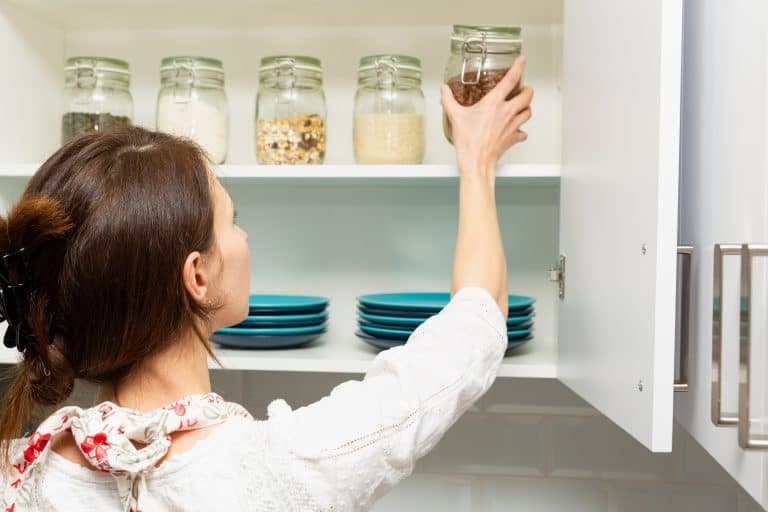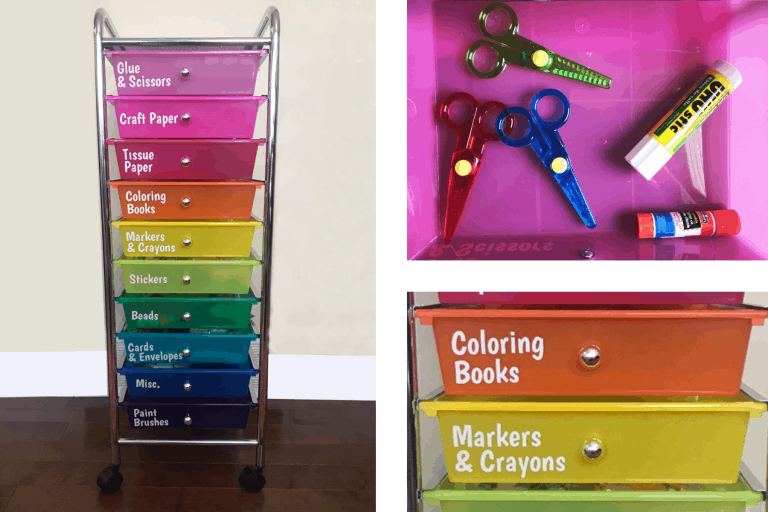Inside: “Discover 8 expert secrets to declutter and organize your home. Unlock the key to a stress-free, organized living space. Get started today!”
Are you ready to turn your chaotic home into a serene oasis but need some simple tricks up your sleeve to get started?
After years of experience, trying to keep my home and family organized I’ve boiled down my best tips to help you go from overwhelmed to organized.
It’s rarely the “perfect” time to take on a home organization project. I’ve learned through the years, that progress is better than perfection!
In this post, I’ll reveal eight expert home organization secrets that will work wonders in any area of your home. These steps are designed to help you get unstuck and reach your home organization goals with ease.

Secret #1: Start with Small Wins for Quick Home Organization
One of the secrets used by professional organizers is to begin decluttering a small and easy space that will give you a quick win. I encourage you to start with my tiny task approach.
With this method of doable decluttering you focus on small projects that take 30 minutes or less. Simply tackle one small project at a time. You can start with something as small as a single drawer.
It’s so gratifying to finish even a small project. You’re signaling to your mind that you can do this and building your motivation to continue on.
One tip is to leave sentimental items, such as family memorabilia or photos, for later. Take a moment now to jot down 1-3 small areas that you could declutter to achieve immediate satisfaction.
4 Tips to Easily Declutter Your Home: The Tiny Task Approach
Secret #2: Establish Criteria for Keeping Items and Streamline Your Decluttering Process
To make the sorting process easier, establish clear criteria for the items you want to keep. For example, consider keeping only clothes you’ve worn in the last 12 months.
You can ask yourself questions like:
- Do I currently use this?
- When was the last time I used it?
- Does it have sentimental value?
- Do I have anything like it that I could use in its place?
- What would I do if I needed it and didn’t have it?
By setting guidelines, you’ll streamline your decision-making and decluttering process.
Declutter Without Regrets: How to Decide What to Get Rid of When Decluttering
Secret #3: Set Limits for Each Space and Maintain Order in Your Home
Maintaining order and tidiness in your home is made easier when you establish limits on how much stuff you want to have in a particular space. Whether it’s the size of your closet, chest of drawers, or even the tupperware drawer, limits provide a natural boundary for organization.
As you begin to declutter and organize your home, take a thorough look at the available storage space in each area. Assess the closets, cabinets, shelves, and drawers to understand their capacity and limitations. This will help you determine realistic limits for each space.
Alternatively, you can set your own limits, such as designating a basket for blankets, or a large plastic bin for your kids’ keepsakes. Once it’s full, it’s time to declutter and reprioritize.
Secret #4: Swiftly Remove Decluttered Items
After decluttering, it’s essential to get rid of the discarded items promptly, preferably within one week.
Consider selling items that are still in good condition. This is a great option for a little extra pocket change, but it does require some effort and time. If you’re unlikely to have the time, then chose another option for getting rid of your decluttered things.
There are a ton of options for selling things. One of my favorites is to take advantage of online selling platforms. Facebook Marketplace, eBay, Craigslist, or local buy/sell groups on social media can help you connect with potential buyers and turn your unwanted items into cash. Remember to take clear photos and write detailed descriptions to attract buyers.
If selling things isn’t for you, then you can donate to charities or families in need, recycle unusable items, or, as a last resort, disposing of them in the garbage. The key is to get the clutter out of your house quickly and prevent the discarded items from becoming future clutter traps.
Secret #5: Make Decluttering a Regular Habit
To ensure a clutter-free home, make decluttering a natural part of your life. Place a box in your closet or your kids’ closet for clothes or shoes you no longer wear and want to discard.
Before significant events like birthdays, Christmas, or starting a new job or school, remove a few old items to make room for the new ones.
Embrace the “one in, one out” rule to stay on top of the items entering your home.
Or, you can dedicate a day each week or month to handle the disposal process. This regular schedule will prevent the discarded items from piling up and becoming overwhelming to deal with.
Secret #6: Assign Every Item a Home
Prevent clutter and disorganization by ensuring that every item in your home has an assigned place. Common culprits for accumulating clutter include incoming mail, kids’ artwork or school papers, keys, and knick-knacks like paper clips and pens. Take note of these items and determine their designated homes to maintain. Your tidy space.
Home Organization Hacks Professional Organizers Use Every Day
Secret #7: Store Items Near Their Point of Use
Keep items close to where you use them for convenience and efficiency. Store frequently used items in easily accessible areas, while seasonal or occasional items can be stored in less accessible spaces like the garage or storage closets.
Establish dedicated storage zones based on the different activities or categories within each space. For example, if you have a home office, create zones for stationery supplies, files, and electronics. By designating specific areas for each category, you’ll streamline the organization process and make it easier to find items when needed.
Regularly review your storage setup and make adjustments as needed. Over time, you may discover more efficient ways to store items near their point of use. Stay open to refining your organization system to better suit your evolving needs and preferences.
By considering how items function in your home, you’ll minimize unnecessary clutter.
Secret #8: Choose Containers Wisely and Optimize Your Storage Solutions
Before investing in containers, go through the editing and sorting process and measure your space. Once you have a clear understanding of what needs to be stored, choose containers that align with your personal and functional preferences. Consider factors such as aesthetics, lids, cost, transparency, and stackability.
Think about the specific items you plan to store and their unique requirements. For example, if you’re organizing a pantry, opt for airtight containers to keep food fresh. If you’re storing small items, choose containers with compartments or dividers for better organization.

Before purchasing new containers, explore options for repurposing or upcycling items you already have. I personally love to repurpose baskets and empty jars. Get creative and give them a fresh look with labels, paint, or decorative touches. This not only saves money but also adds a unique touch to your organization system.
The possibilities for containers are endless, ranging from mason jars and shoe boxes to baskets and clear acrylic containers.
With these eight professional secrets, you’re well-equipped to transform your home organization journey from overwhelming to achievable. Start implementing these tips today and experience the calm and order you deserve in your living space. Remember, small steps lead to significant results, so embrace the process and enjoy the transformation of your home.








